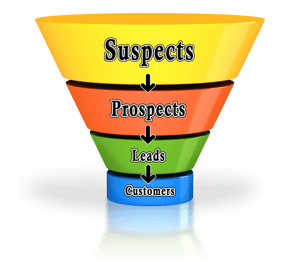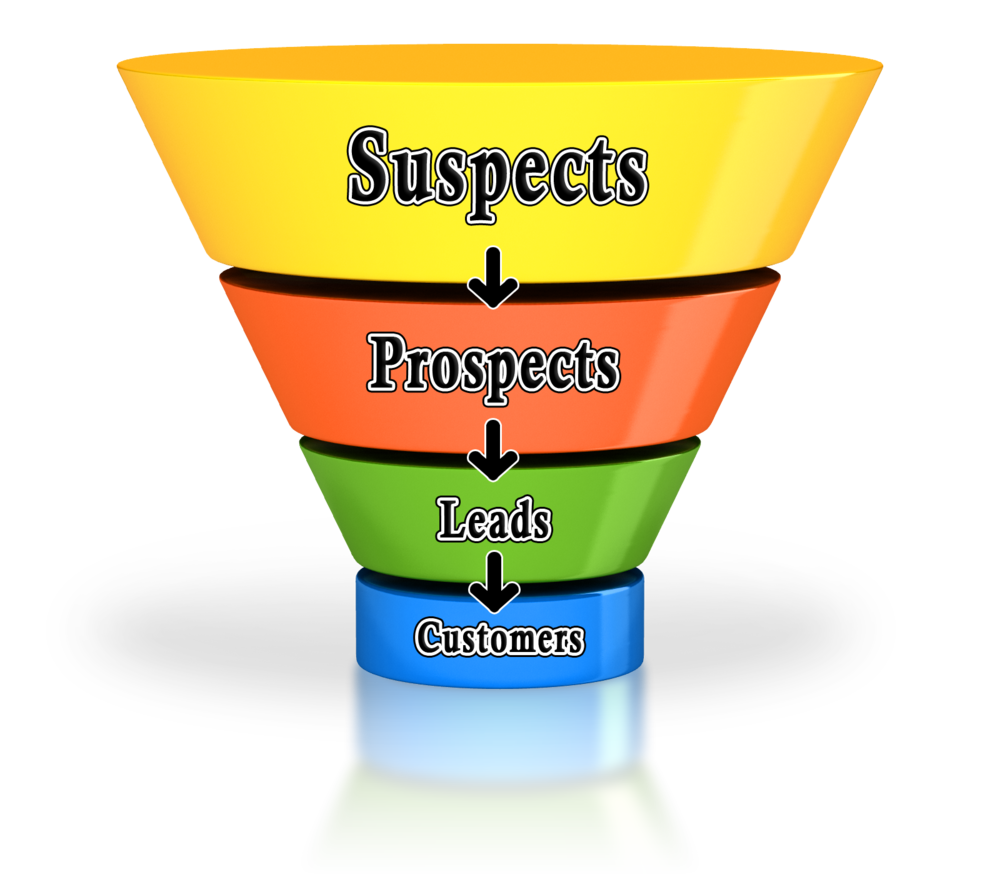How to Achieve Sales and Marketing Alignment
We have developed a unique and free online marketing calculator which you can use to quickly set numerical Inbound Marketing and Sales team SMART goals. This is the first step of the process of developing a Service Level Agreement (SLA) between Sales and Marketing.
Free Online Sales and Inbound Marketing Calculator.
How to quickly estimate required website visits, leads and customers to achieve your revenue goals and stop having a inbound sales vs outbound sales human resources conflicts.
Just What are S.M.A.R.T Goals?
Before we dive into what we mean by setting goals, it is first necessary to know just what the SMART goals acronym stands for:
- Specific
- Measurable
- Achievable
- Realistic
- Time-Bound
You will often hear this term bandied about, but I think it is best to give you my interpretation of it. I view at as a goal setting framework for defining the finish line. But not just any goal. The goal for two or more teams, in this case, Sales and Marketing. It can also incorporate goals for service and delivery teams.
Executive Leadership is Key
Sales managers as well as marketing managers must work together to set these smart goals that will meet the top level annual revenue targets. Whether in small businesses or large enterprise, these annual revenue targets have to be set by the executive leadership team. They are the ones with an eye on the long term health of the enterprise.
Sales Leader Must Set Realistic Goals
While setting personal goals for individual sales team members is necessary, they must be set with the overall sales objectives in mind. That's why the sales leader must have a system that allows him to break down annual goals, into quarterly goals, monthly goals, and ultimately, individual performance goals.
Performance Management System Required
While the exercise of having sales and marketing work through their leads and sales revenue goal setting is important, one of the more critical elements of success if to set sales activity level goals.
What Activity Can You Track Systematically?
While nobody likes to be 'tracked', the truth of the matter is, sales is often a game of numbers. With a Customer Relationship Management System (CRM), you can track, at a minimum, the following sales activities:
- Calls Made (Cold Calls or Warm)
- Online Meetings Attended
- To Do Tasks (Due, Overdue, Completed)
- Sales Emails Sent
- SMS messages sent
From experience, as sure as day follows night, sales activity closely tracks with sales achieved. That's why one of the other calculations you will end making is a sales activity goal. Hitting these sales activity levels then becomes a detailed action plan.
Free Online Sales and Inbound Marketing Calculator. How to quickly estimate required website visits, leads and customers to achieve your revenue goals and stop having a inbound sales vs outbound sales conflict.
Quality Interactions vs Low Quality Interactions
While it is often tempting to set very high stretch goals when it comes to sales activity planning, I have found that it is better to target higher quality sales interactions versus just hitting the sales activity number. Higher quality often times mean spend more time to build rapport, achieve a deeper understanding of the client's pain points and business goals, and understand the real time period they have in mind for achieving their goals. This also tends to drive down the total cost of sales for such deals.
CRM is a Prerequisite
This is one of the reasons you need a CRM system, such as Hubspot CRM, that allows you to set sales quotas based on sales targets. They are invaluable to providing real-time feedback of sales performance, to both sales managers and individual team members.
Key to Improved Call Center Response Time
If you look at any response time log of any call center, you will almost always see room for improvement. While a modern Call Center using a CRM like Hubspot, Salesforce or InsideSales can handle most sales volumes, theoretically at least, you will still observe many missed, dropped and unanswered calls when you dig into the CRM log files.
Key to Call Center Sales Performance
That's why if you want to set and meet team goals, such as increase sales, you have to have a properly sized, properly staffed, call center. Without these elements in place, no matter how many leads and sales you have computed you need, you won't hit your goal.
Inside Sales and CRM
While this author's sales experience has primarily involved large enterprise ERP and large dollar amount sales and a longer sales cycle time, much of the work is now being done using Inside Sales Teams, though there are still plenty of field sales teams out there. These types of sales are typically for smaller Average Order Values or AOVs, as the market has evolved, larger deals are increasingly being handled by inside sales teams.
While it used to take enormously complex, very expensive equipment to set up an inside sales operation, that is no longer the case. Today, with a system such as Hubspot or other cloud based CRMs, you simply turn them on. This compares favorably with the minimum of nine months implementation time for a typical call center setup project.
Because they are now so much simpler to set up, it is even more imperative to set sales targets and develop a sales strategy that can be executed successfully. This has had the happy side effect of driving down customer acquisition cost as well as, when managed well, improving customer retention.
Measuring Inside Sales Conversion Rates
One of the key elements you need to have in place before ramping up an inside sales based operation is, in addition to your CRM system, a digital measurement system. While Google Ads can be used to drive inbound calls, and Google Analytics provides some limited call tracking functionality, you'll typically find you need a better call analytics solution, such as that from CallRail, one of several providers.
Bad Measurement Means Low Goal Achievement
One of the guaranteed ways to drive high a sales team churn rate is to have incomplete or erroneous measurement. After all, if you went through the trouble of setting annual revenue goals, established individual and team sales goals, and have designed and implemented the best sales system possible, the last thing you want to be debating is about conversion rates. Or who sold how much. Or who gets credit for which sale. That's why you want to set up an end-to-end sales and marketing funnel that you not can measure, but that everyone trust is correct.
Bad Measurement Leads to Higher Customer Acquisition Costs
While a sales manager must be laser focused on hitting weekly sales targets and achieving total revenue targets, bad measurement also drives higher lead acquisition cost across the entire marketing and sales funnel. How does it do this?
- Drives higher advertising cost by targeting the wrong leads.
- Drives poorer sales performance by bring in lower quality leads.
- Drives higher customer churn by missing out on proper educational retargeting opportunities.
- Results in missed cross selling opportunities and upsell opportunities.
- Drives down overall customer lifetime value
In short, having a 'trusted measurement' system is an absolute must if you want to truly build a world class sales and marketing machine. It's also key to setting goals based on sales targets everybody will buy into.
Sales Target Devolve to Personal Targets
Annual revenue targets are typically set to hit business growth targets as established by the senior management team, and are a Top Down approach to setting sales goals. Ultimately, they have to evolve into personal targets for each sales rep.
Annual Sales Goal to Monthly Goal
In scenario for the SAP partner, we know that their past performance of annual sales was twenty million. They've now increased that target to twenty-one million, by the end-of-the-year. Roughly speaking, they've increased their monthly sales target from 1.66 to 175 million. This could be broken down further into a per day amount of about 57.5 K, but their sales revenue is likely to be spikey.
Let's explore the meaning of each part of the acronym.
- Specific
Specific means be very precise with how you state the goal. In this context, it usually means achieve X dollars of sales or bring in Y number of Leads - Measurable
Think of this as setting a sales target. Or a lead generation target. - Achievable
This is usually where you run into goal setting friction. What it means is that you set a goal that, given your knowledge of your capabilities, the demand for your product or service and your financial ability to deliver, you set goals that can be met. - Realistic
While this is closely related to achievable, this is where you need to possibly reduce your sales targets a bit. Having a stretch goal can be useful, but it can also be destructure and demoralizing.
For example, if you are aiming to increase market share by 50% in the real estate market, given how competitive it is, and your current market share has not increased by more than 1 or 2 percent in any given year, it's probably not realistic. - Time-Bound
For a goal to be SMART, having time frame within which you plan on achieving it, is critical.
Simple SMART Goal Example
Small Business Example
In order to illustrate the concept, it's best to see an example for a small business, an SAP partner who sells an SAP add-on and currently does about twenty million a year in business, of which, about 50% of it is Net New License Revenue while the rest is services and some add-on software. One SMART goal might be, we want to sell an additional one million dollars in net new license revenue by the end of the year.
Evaluating Our SMART Goal Example
This one is SMART. We specifically want to sell Net New Licenses. We are measuring the revenue, it is achievable, given that we already sell a lot of net new license revenue and have the capacity to sell more. Given the size of the market, our marketing and sales team, as well as delivery team, see it as realistic that we can hit the target, and we have six months left to go in the year, and see this as challenging, given time frame, but doable.
Build Your Sales Funnel Based on Data
When building out your marketing and sales funnel, you can use our sales and marketing calculator to quickly answer questions such as:
- What is your Sales and Marketing team's shared Target Revenue?
- How many new customers do you need each month (how many would you like to have)?
- How many new contacts or qualified leads do you need each month?
- How many website visitors do you need each month?
It sounds simple enough – Sales and Marketing should have aligned goals.
It isn't a question of inbound sales vs outbound sales
The question is how to make that happen.
As you know, Hubspot's website platform (can and does if integrated properly) measures every aspect of all Sales and Marketing channels these days.
Smart Marketing - SMARKETING
You can not only achieve your goals, using a concept called "Smart Marketing" or SMARKETING, you actually have a critical need to ensure your Sales and Marketing teams are aligned and being held accountable to each other.

How Many Website Visits, Leads and Customers do you need - Wizard
What are the critical elements necessary for Marketing and Sales to be in alignment?
- Have a clearly defined sales process.
- Quality leads do you no good if no one is trying to sell your product or service to those leads.
- This is why you must have well defined sales funnel. It's a critical step in defining your sales process. While all sales processes are unique, just taking the time to define one is the first step in continuously improving yours.
- Quality leads do you no good if no one is trying to sell your product or service to those leads.
- Have a clearly defined minimum revenue target.
- Your minimum revenue target directly sets the level of marketing and sales effort needed.
- It also directly affects how much cash flow you will achieve.
- Your minimum revenue target directly sets the level of marketing and sales effort needed.
- Have a marketing approach, such as the Inbound Marketing Methodology, that delivers leads to sales at a rate sufficient to allow sales to keep up and to achieve the target revenue goal.
- Know your buyer personas. Periodically update your target Buyer Persona assumptions.
- Have a Service Level Agreement (SLA) between Sales and Marketing so each function has clear, measurable expectations of each other.
- Have a closed-loop reporting system from first customer contact to final product delivery and post product delivery activities.
- Have a continuous process improvement program enabled by the closed-loop reporting system.
- Have a clear idea of what a new customer order is worth to your business, both as a single sale and the Life-Time Value (LTV) such as a membership, retainer or recurring subscription.
- Ensure that you have listening channels opened up such that when Sales hears of a problem, marketing is made aware of it so they can take action.
- Understand which products and services fit on which side of the 80/20 profitability equation.
Having these and other elements in place such as having a competitive product and experienced sales team will a go a long ways toward achieving Sales and Marketing Alignment.
Achieving Realistic Business Goals
We believe the first pre-requisite achieving your business goals is to have clear, numerical Sales Revenue Goals and Marketing Leads Goals established.
Website Traffic, Leads and Sales Required
To help you set these goals, we have developed our unique online FREE Website Traffic and Leads Required Calculator. You can use to quickly establish what you will need in order to hit your marketing and sales targets.
Benchmark Your Current Plan
You can also use this calculator to benchmark how well your current content plan is progressing.
Click the button to go to the calculator page, to see your results and to get your customized results summary:
People who read this also read:
16 Keys to Unifying Sales and Marketing
11 Ways to Use Hubspot CRM as a Sales Force Multiplier
3 Marketing Routes to Reach Your CRM Goals
10 Hubspot CRM Inbound Sales Best Practices
Get What Is Inbound Marketing Used For By SAP Consultancies [eBook]
10 Critical Chain Project Manager Tips
How to Select a SAP Recruitment Agency
8 Secrets to SAP Enabled Spend Performance Management
Thanks




